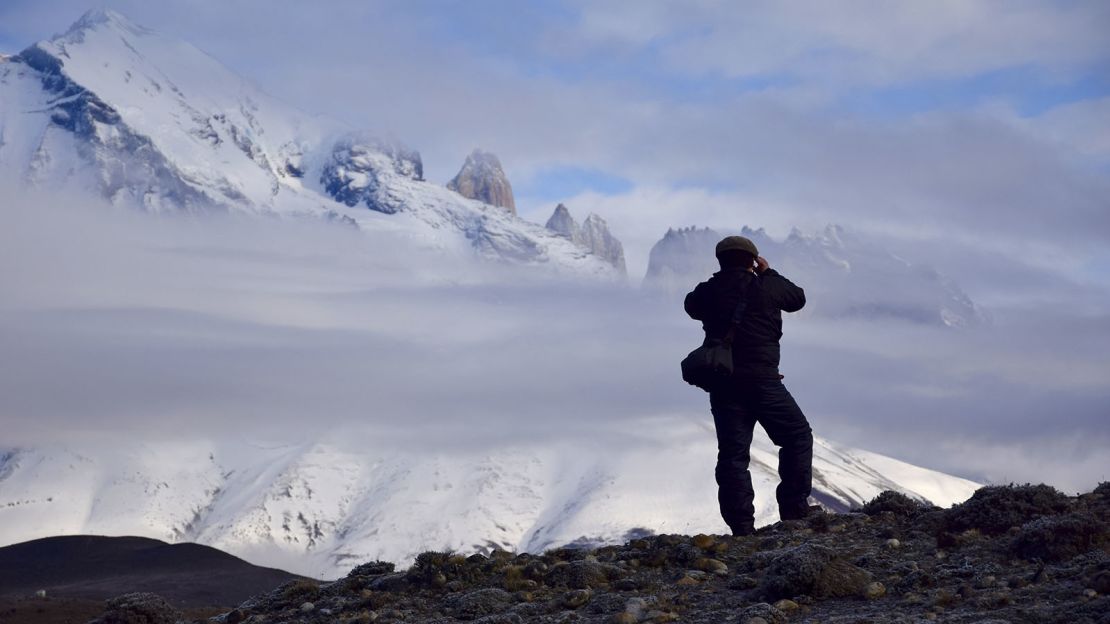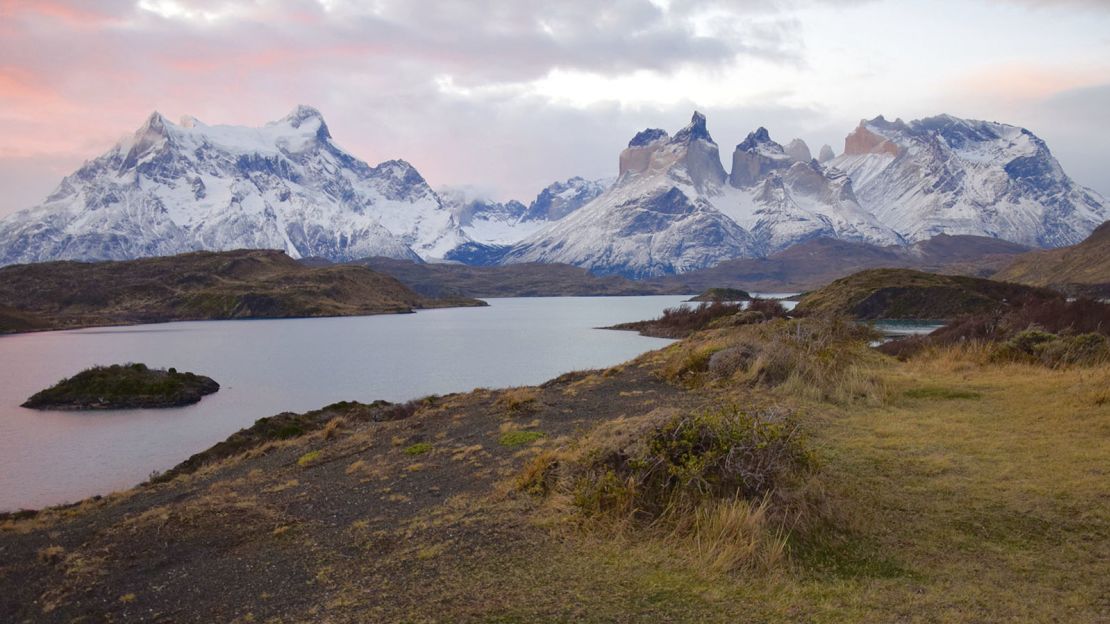The first flickers of the morning sun haven’t yet danced across the horizon when its amber eyes freeze in the glow of my headlights.
Momentarily stunned, it shuffles its muscular body up a rocky Patagonian hill, looking back only once before disappearing high above an alpine ledge where the stark terrain merges with the brightening austral sky.
I’m but 10 minutes away from my hotel, and I’ve already accomplished the biggest goal of my trip: catch a glimpse of the mysterious puma.
It absolutely, without a doubt, was not supposed to be this easy.
Pumas are among the least seen of earth’s big cats.
Though they’re widely distributed from the Canadian Rockies to the southernmost Andes (and known alternatively as cougars or mountain lions), pumas have historically been thought of as too elusive for any sort of commercial tourism.
That changed when a company called Quasar Expeditions, in partnership with Explora Patagonia, launched its first puma trekking safaris earlier this year in Chile’s famed Torres Del Paine National Park.
The idea was to give wildlife enthusiasts the same opportunity to see pumas as they’d have with jaguars in Brazil, lions in Africa or tigers in India.

Sightings ‘transmit energy’
It’s estimated that the 935-square-mile Torres Del Paine in southern Patagonia is home to more than 50 pumas, giving it one of the world’s densest big cat populations.
Early morning rays have just painted the park’s famed massif in a violet hue when I meet up with 33-year-old puma tracker, Jose Vargas.
It’s been about a half hour since my chance encounter, and he can sense the effect the cat has already had on me.
“When you see the puma eye to eye, it transmits an energy that’s quite powerful,” Vargas says as we set off into the UNESCO World Biosphere Reserve with binoculars and high hopes.
Our first stop on the aptly named Fauna Trail is an arid plateau buzzing with brush-grubbing guanacos.
These wild cousins of the domesticated llama are among the puma’s favorite foods, and it shows on the bone-riddled trail ahead.
Vargas bends down next to a spiky “mother-in-law’s pillow” bush to inspect a particularly bloody guanaco carcass.
He tells me that it can’t be more than two days old, but adds, “the puma has surely moved on by now to hunt for another kill.”
A beret-wearing, mate-drinking gaucho, Vargas grew up in the park’s Lago Grey region and was tracking pumas alongside his father when he was just five years old.
He says the methodology hasn’t changed over the years.
He listens to the guanaco’s bleating calls – “many in rapid succession could signal a puma” – and looks for cues from the sentinel, an older male who stands on a hilltop overlooking the herd.
Tricky prey
About three hours into our hike we reach an overlook above Laguna Goic with sweeping views of the snow-capped Andes floating like white waves on the horizon.
We’ve laughed at courting rhea birds (they’re related to the ostrich and emu), chased a gray fox in pursuit of photos and smelled more hog-nosed skunks than we’d care to.
But we have yet to lay our eyes on another puma.
Vargas says the caves near this lagoon are a popular puma hangout.
He saw a mother and two cubs here three days ago, but there are no signs of activity as we stand on a high point surveying the land, nor is there the slightest hint of fear in the guanacos nearby.
Active from dusk to dawn, pumas are rarely spotted midday and our clock is ticking.
Vargas suggests we climb along the lagoon’s frosty edge in a last ditch attempt to come eye to eye with a puma.
We’re rounding a rock formation when he calls out that he’s spotted a puma.
A light snow has just erupted from a sunny sky slightly obscuring my vision.
By the time I make my way to his side the puma has climbed over a ledge out of view.
I’m gutted.
It’s nearly noon and our window of opportunity has closed.

Glacial lakes
I head out again in search of pumas that evening and twice the following day.
I’m awed by the wingspan of soaring condors, the elegant frock of the caracara and the cotton candy blue of the glacial lakes, but I never do manage to spot the enigmatic puma in broad daylight.
In the end I’m OK with it.
Unlike many safaris in Africa (or Asia) where Big Five success is all but guaranteed, there’s nothing contrived about finding pumas in Patagonia.
There’s no baiting, there are no feedlots and there are a limited number of tracking sessions each year where the chances of success are admittedly slim.
But there’s something nice about knowing that these creatures are free to roam in and out of the park, clocking in six-mile journeys on an average hunting day – and that your encounter, if it happens, hasn’t completely disturbed their solitary ways or turned them into showpieces in a cageless zoo.
When you do see this spectacular feline, however dark the night may be, you feel like you’ve actually earned the honor.
Quasar Expeditions Patagonia; +562 2 952 2369; +1 800 650 9385 (from U.S.)
Mark Johanson is an American travel and culture writer based in Santiago, Chile.









